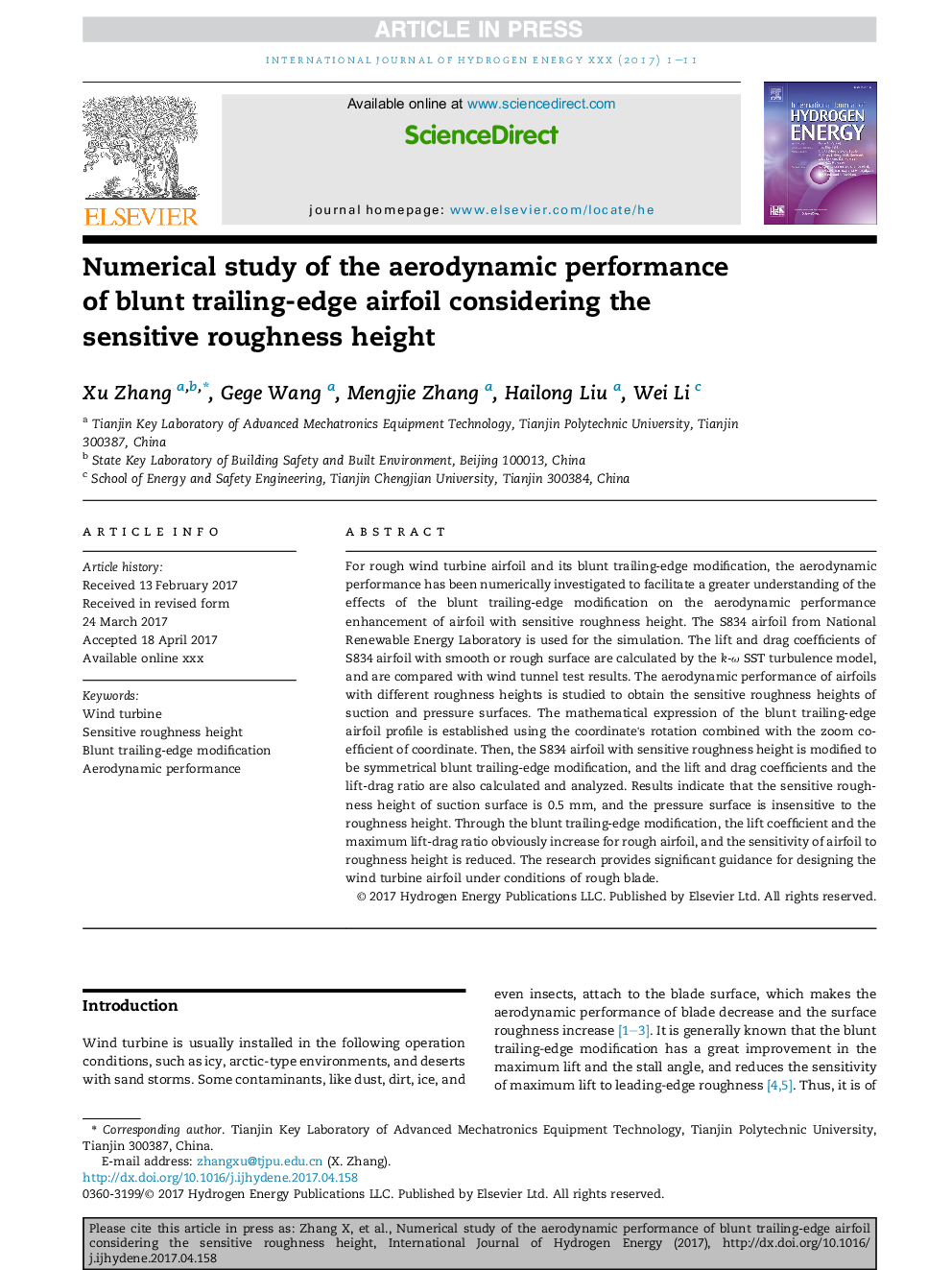| Article ID | Journal | Published Year | Pages | File Type |
|---|---|---|---|---|
| 5146186 | International Journal of Hydrogen Energy | 2017 | 11 Pages |
Abstract
For rough wind turbine airfoil and its blunt trailing-edge modification, the aerodynamic performance has been numerically investigated to facilitate a greater understanding of the effects of the blunt trailing-edge modification on the aerodynamic performance enhancement of airfoil with sensitive roughness height. The S834 airfoil from National Renewable Energy Laboratory is used for the simulation. The lift and drag coefficients of S834 airfoil with smooth or rough surface are calculated by the k-Ï SST turbulence model, and are compared with wind tunnel test results. The aerodynamic performance of airfoils with different roughness heights is studied to obtain the sensitive roughness heights of suction and pressure surfaces. The mathematical expression of the blunt trailing-edge airfoil profile is established using the coordinate's rotation combined with the zoom coefficient of coordinate. Then, the S834 airfoil with sensitive roughness height is modified to be symmetrical blunt trailing-edge modification, and the lift and drag coefficients and the lift-drag ratio are also calculated and analyzed. Results indicate that the sensitive roughness height of suction surface is 0.5Â mm, and the pressure surface is insensitive to the roughness height. Through the blunt trailing-edge modification, the lift coefficient and the maximum lift-drag ratio obviously increase for rough airfoil, and the sensitivity of airfoil to roughness height is reduced. The research provides significant guidance for designing the wind turbine airfoil under conditions of rough blade.
Keywords
Related Topics
Physical Sciences and Engineering
Chemistry
Electrochemistry
Authors
Xu Zhang, Gege Wang, Mengjie Zhang, Hailong Liu, Wei Li,
